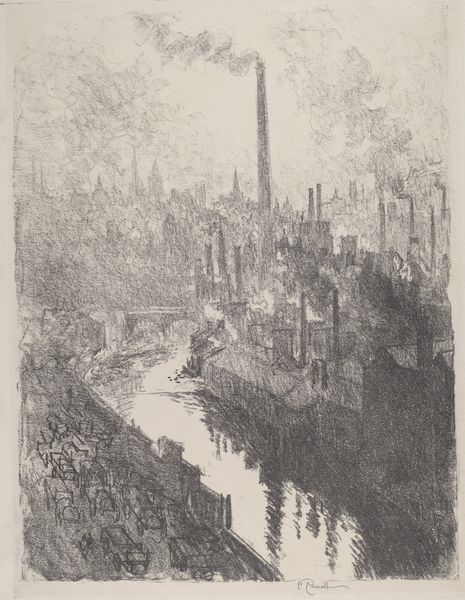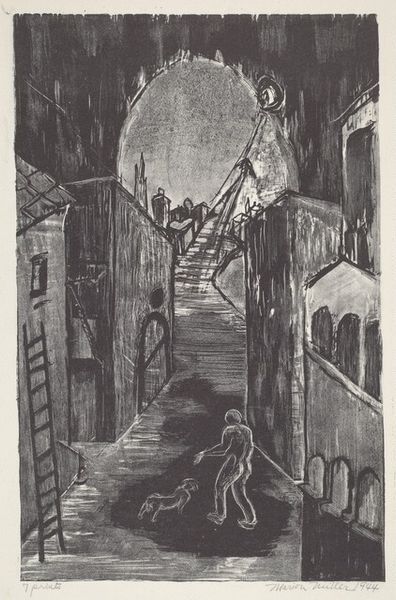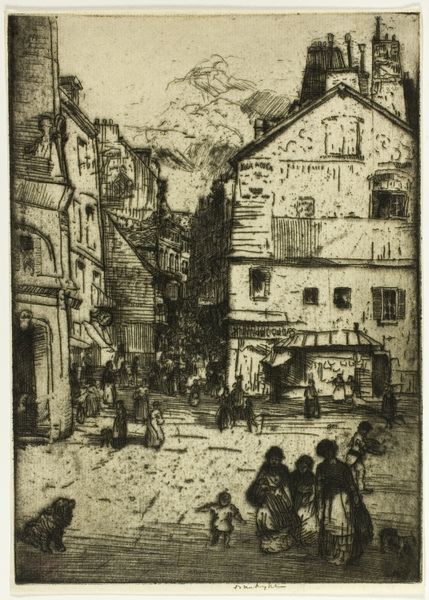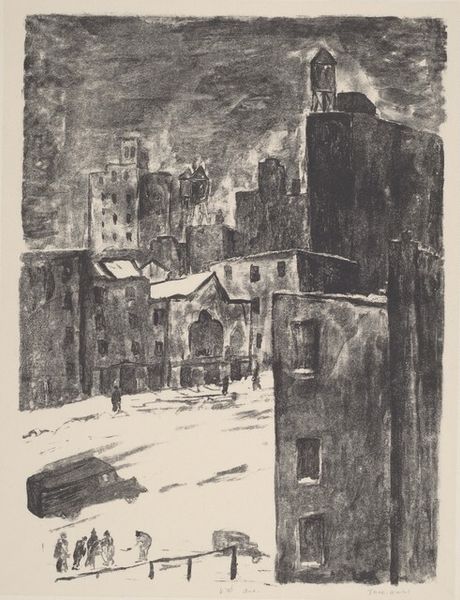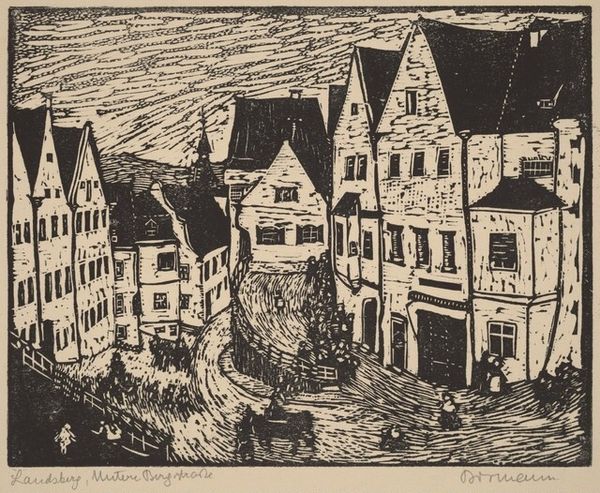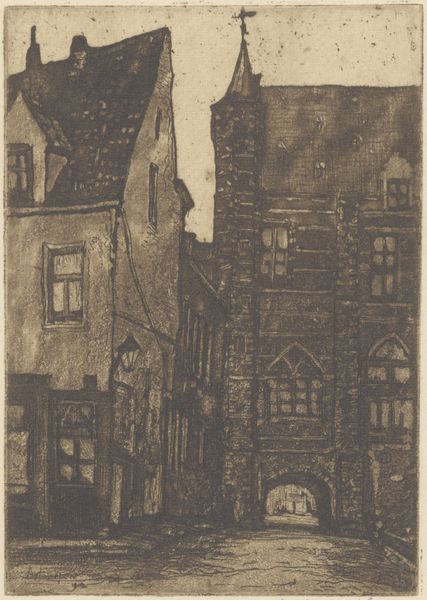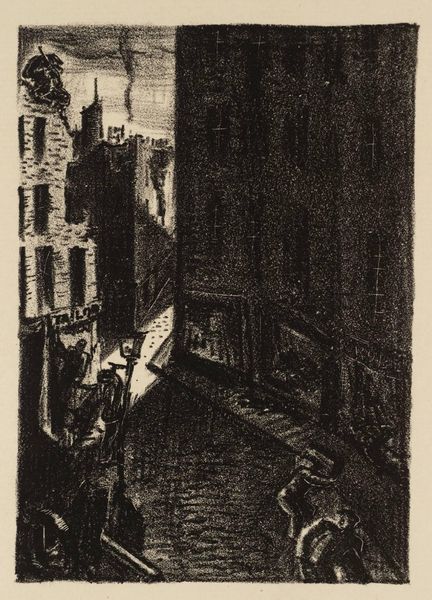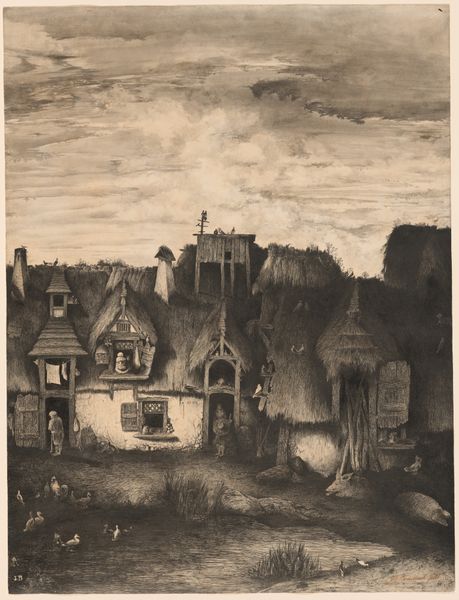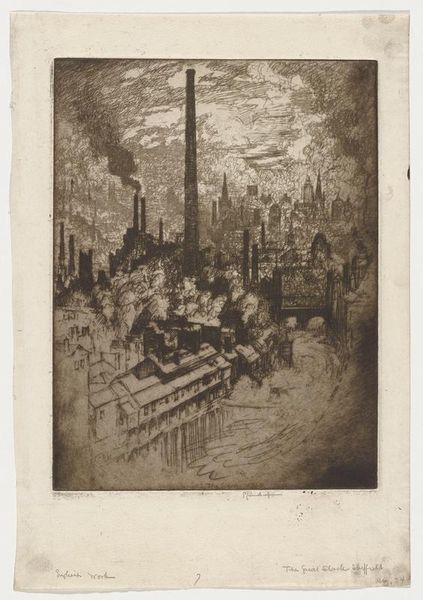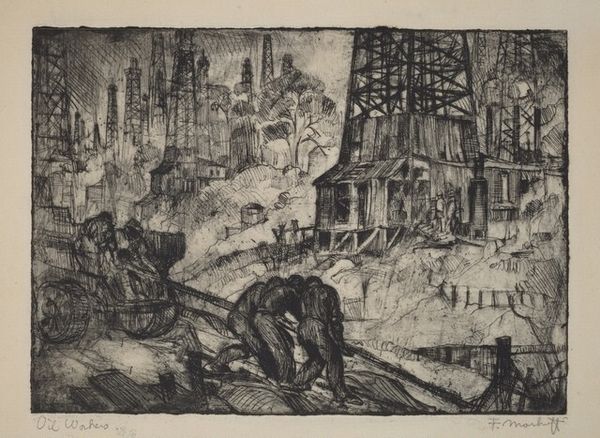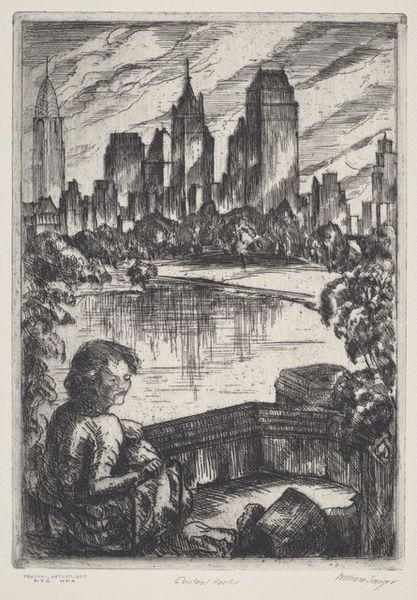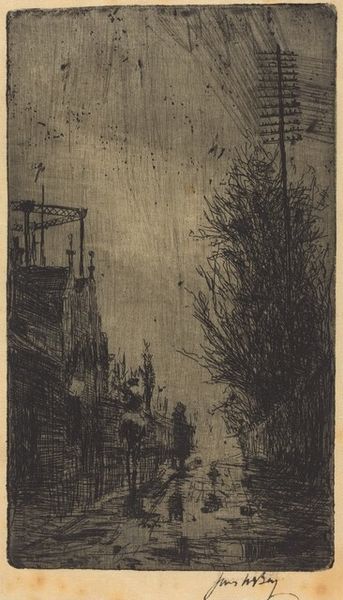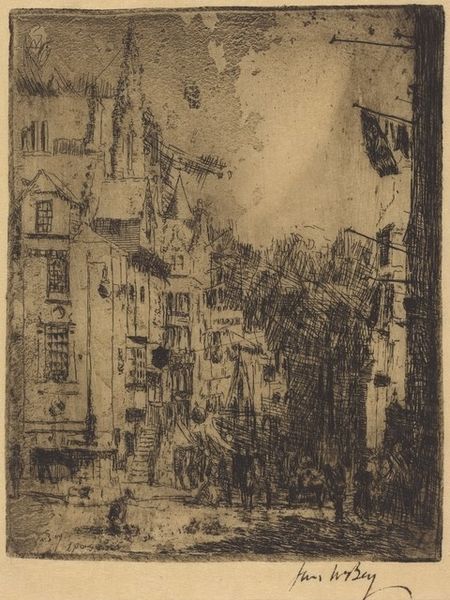
drawing, print
#
drawing
# print
#
landscape
#
charcoal drawing
#
cityscape
Dimensions: stone: 400 x -- mm image: 341 x 262 mm sheet: 419 x 337 mm
Copyright: National Gallery of Art: CC0 1.0
Curator: This piece, titled "Well of Loneliness," a print by Martin Jackson, was created in 1948. It immediately evokes a feeling of...oppression? Is that too strong a word? Editor: Not at all. Oppression resonates strongly here. Look at how the cityscape, almost a gothic skyline, seems to loom within a dark, cavernous form. There’s an isolation created by this shape—it reminds me of a heavy thought, weighing down on the figure below. Curator: The figure, yes, dwarfed by the imposing structures. Cityscapes, in art, so often celebrate progress, human achievement. Here, that spire pierces a turbulent sky; the whole image feels much more ominous. Do you see specific symbols carrying that feeling? Editor: The clouds, for one. Traditionally, turbulent skies signal internal struggles or societal unrest. Then, the architectural forms, almost devoid of windows or signs of life, appear more like prisons than places of dwelling. And, consider that the figure seems poised at the entrance of a dark foreground, perhaps embodying loneliness as both a personal state and a commentary on postwar alienation. Curator: Postwar…interesting. It’s easy to get lost in the romantic symbolism of ruins or solitude. But situating it historically really changes things. The work now seems to channel the anxieties of that era. Are we dealing with physical scarcity, emotional numbness, the bleak feeling that came with the rapid expansion of cities during this time? Editor: Probably a combination. There's also that sense of disillusionment, the breakdown of community that follows immense societal trauma. Jackson has not only captured loneliness but also its deep roots in specific social conditions. You also can't help but wonder if the title hints at themes suppressed at the time of the art’s making, ideas pushed into a social “well of loneliness,” hidden from view. Curator: It feels relevant today as well. Considering themes of isolation and historical anxiety, that adds weight to the whole artwork, I think. I initially saw simple somberness, but it offers such a rich commentary, when viewed in a historical light. Editor: Absolutely. It goes beyond melancholy to say something urgent about the individual’s relationship to society. A quietly powerful work.
Comments
No comments
Be the first to comment and join the conversation on the ultimate creative platform.

